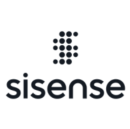One might think that the best customer success managers have all the answers all the time — but Kevin Pruna disagrees.
The CSM at Augury believes it’s perfectly fine for CSMs to sometimes say, “I’m not sure; let me get back to you.” In Pruna’s mind, these words aren’t a sign of failure on the CSM’s part; rather, they’re an indication that they’ll do whatever they can to find the best solution.
After all, problem-solving is a core component of being a CSM. This is something CSM Kat Thorpe knows well, as she often finds herself pulled into customer “fires” throughout a given workday when she’s not busy staying proactive with her accounts.
Of course, those are just two of the many elements of Thorpe’s job at Sisense. From taking customer calls in the morning to reviewing outstanding tasks in the evening, she shared that there’s always a lot on her plate; but with the right practices and support from others, she manages to accomplish it all and still find time to level up her CS acumen.
Built In NYC caught up with Pruna and Thorpe to learn about their day-to-day work, how they stay “in the loop” on product and customer updates and the advice they’d offer to CSMs eager to strengthen their skills.
Sisense’s platform enables companies’ product teams to integrate customized AI- and machine learning-based analytics into products, enabling customers to make more data-informed decisions.
Give us a snapshot of what a typical workday looks like for you. What are your daily priorities, and where do you start?
Each morning, I read through Slacks and emails while remaining mindful of my time zone and reaching out to support colleagues based in Europe, the Middle East or Africa before they begin to wrap up their day. Many of my customer meetings are in the mornings, as it’s later in the day for them, given they live within either eastern or central time zones. Customer calls are crucial for establishing the reliability and resourcefulness required of being a trusted advisor, allowing time to provide updates, track progress and address concerns.
“Customer calls are crucial for establishing the reliability and resourcefulness required of being a trusted advisor, allowing time to provide updates, track progress and address concerns.”
Throughout the day, I coordinate internally with my sales counterparts and the broader team to strategize on renewals and address customer issues or bugs that are outstanding. I work toward staying proactive with my accounts but often find myself pulled into customer “fires,” making it a constant balancing act. Our management team is great at supporting our proactive efforts with our accounts, which helps with prioritizing this critical component of being a strategic CSM. Before signing off for the day, I review outstanding tasks that can get pushed, and those that need action before the end of day are completed later in the evening after a break.
How do you stay in the loop with product and customer updates?
Staying in the know through learning and development is key to understanding our product and customers, and, therefore, the success of my job hinges on it. Throughout my career, the employers who understand the importance of supporting dedicated focus time for L&D have been the most exceptional places to work, and Sisense is one of the best. I frequent CS coaching and CS collective resources and materials.
Tools and Tactics Sisense Uses for L&D
For product updates:
- webinars
- internal enablement meetings
- roadmap sessions
- reviewing release notes
- adding the version rollout plan calendar for visibility regarding when future releases are expected
For customer updates:
- regular customer syncs (frequency dependent on current needs and feedback)
- Salesforce
- growth/risk slides
- “Get Sassy” dashboard
- cloud customer passport
- open lines of communication internally with sales, support and product teams on customer behavior
- ZoomInfo
- LinkedIn Navigator
- net promoter score/customer satisfaction score surveys
Are there any words of advice or helpful tools that help you stay on top of things?
A colleague and friend has wisely reminded me to approach difficult tasks one step at a time. Often, the hardest step is the first, so getting started is something I commit to then break into manageable steps.
I prioritize and plan each day and create to-do lists at least one week ahead while revising and updating as the date approaches. If something can be done in less than five minutes, I’ll just do it or break it into manageable steps to make progress. It’s important to minimize distractions during project work to maximize output.
Team collaboration is huge; if one person is encountering an issue, someone else is most likely experiencing it as well. Open communication with the team and customers is key for healthy progress.
Augury’s AI solutions offer manufacturers insights into machines, processes and operations, enabling teams to gauge production health, optimize outcomes and achieve sustainability.
Give us a snapshot of what a typical workday looks like for you. What are your daily priorities, and where do you start?
My day-to-day work is rooted in being the first point of contact between our customers and Augury. While most days keep you on your toes, the typical day is a cocktail of proactive communication, finding solutions to clients’ unique issues and building relationships with key corporate stakeholders.
“The typical day is a cocktail of proactive communication, finding solutions to clients’ unique issues and building relationships with key corporate stakeholders.”
My day begins well in advance of my first meeting, and proactivity is coupled with some much-needed caffeine. My morning is focused on prioritizing different goals for the day, week and month. I look at customer health metrics, engagement data and feedback to identify areas that can be improved. This approach helps me predict customer needs and potential problems and adjust or push for actions accordingly.
While the short-term day-to-day involves prioritizing different emails, prepping for my next meeting or sending the latest customer feedback to the product team, the long-term involves reviewing last month’s engagement metrics for a client, organizing quarterly business reviews or planning for next quarter’s large renewal. A good day at work means you’re able to drive a client’s success, enhance satisfaction, harbor long-term relationships and gather feedback necessary for innovation.
How do you stay in the loop with product and customer updates?
As an email and Slack addict, I’m habitually checking our multiple channels of communication to find the latest update for a specific client. This allows me to stay up to date with internal and external requests and triage accordingly depending on urgency. From there, my approach to receiving the latest and most relevant information will vary from client to client. As a CSM, you must understand the client’s business needs and adjust their success plan to the latest changes in the economic landscape.
Last but not least, keeping open channels of communication internally between individuals and teams allows for an even greater customer experience. There’s a high level of collaboration and trust on my team; even if I wasn’t copied on an email, a teammate will forward it to me so I’m never blindsided.
Are there any words of advice or helpful tools that help you stay on top of things?
It comes down to three main pillars: proactivity, collaboration and being OK with uncertainty. Proactivity is the name of the game. If you can anticipate hurdles in an upcoming meeting, QBR or renewal, your ROI will always be positive. The key is to plan your time as efficiently as possible. My manager does an incredible job of being a cheerleader while coaching me on where to focus my attention and often helping me push hurdles off my plate.
Collaboration between teams is critical to ensure seamless customer experience. While some days this means endless internal syncs, these meetings are critical, as a key component of the role is to share insights with the sales, marketing and product teams to potentially usher in the company’s next great feature.
Lastly, be OK with saying, “I’m not sure; let me get back to you.” As a CSM, active listening and problem-solving skills are ingrained into you. These traits prepare you to handle situations where an answer is not always clear. Accepting that you will never know everything about a client or industry and allowing yourself to be a blank slate enables you to always continue learning and prepares you for the next time you’re asked a similar question.











